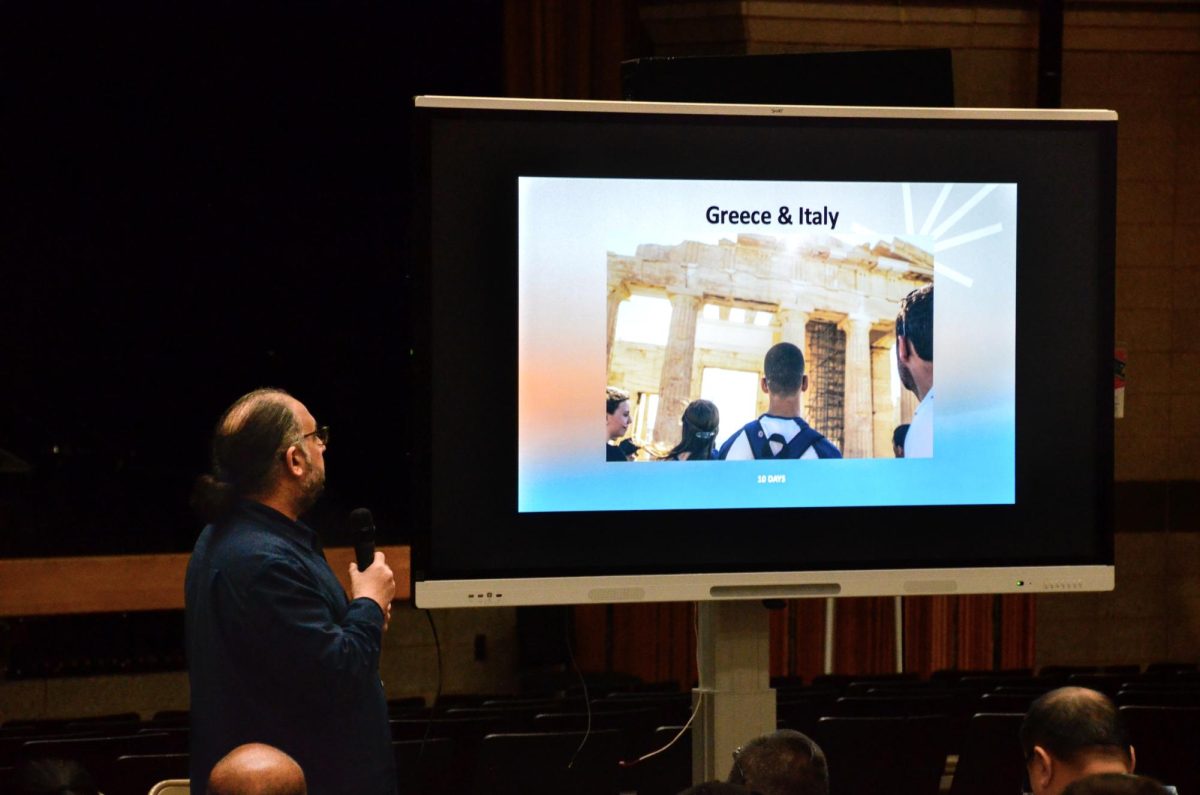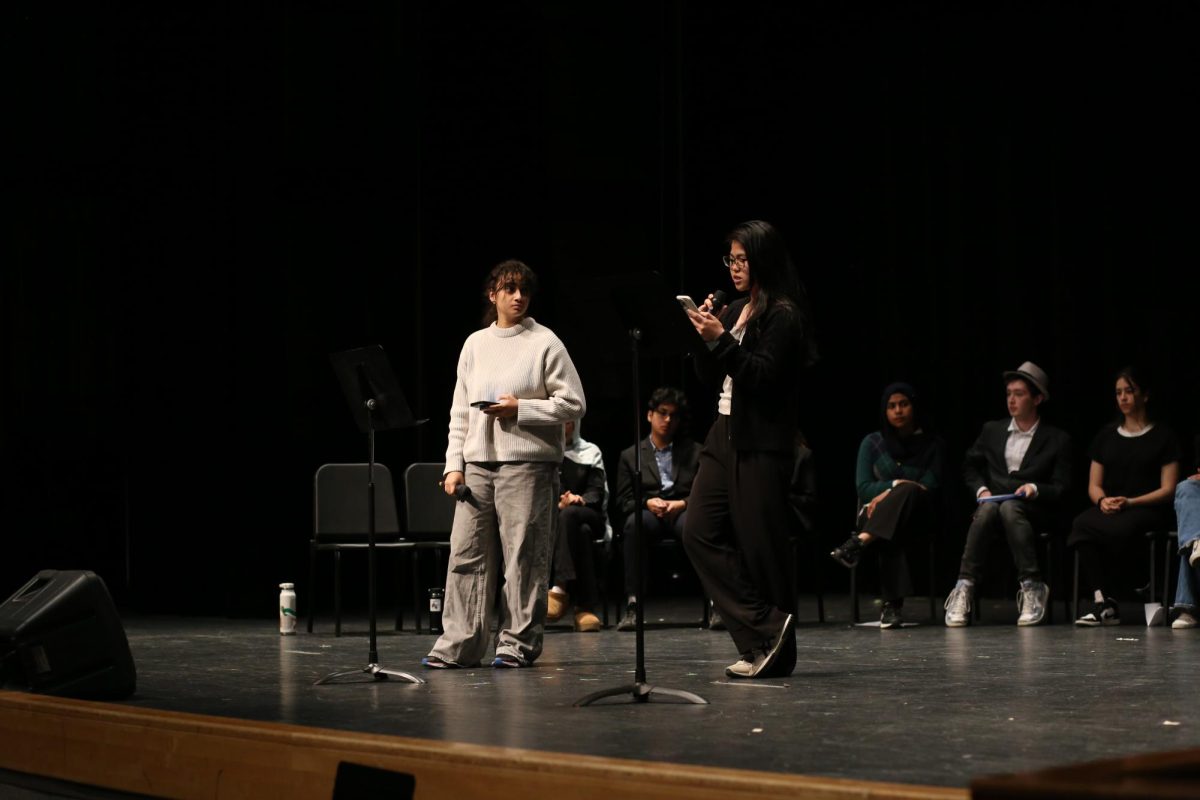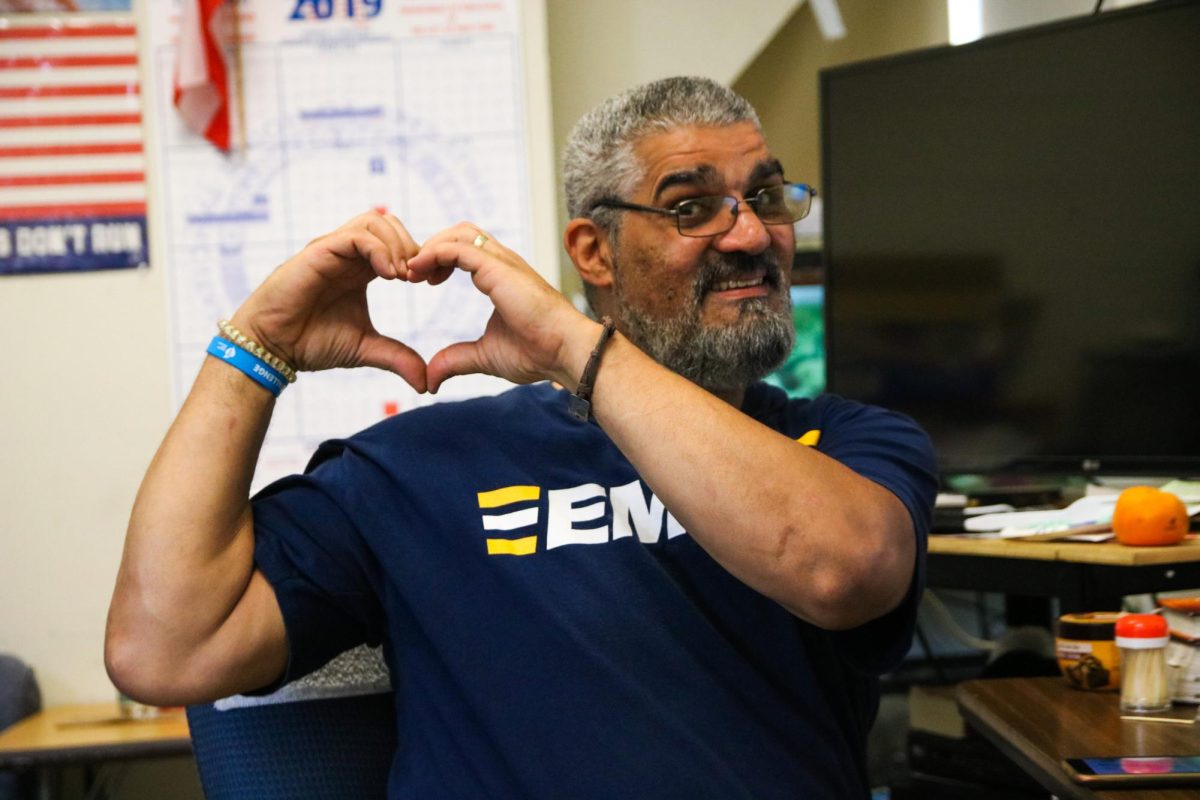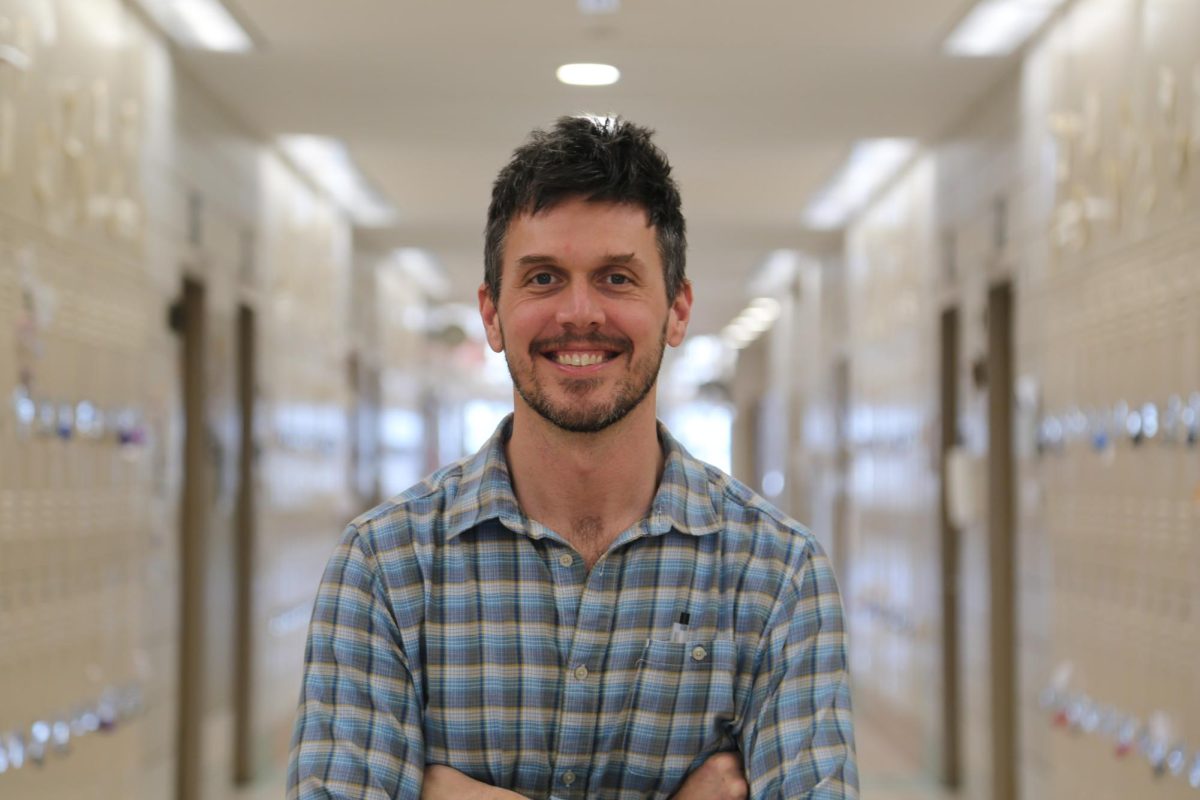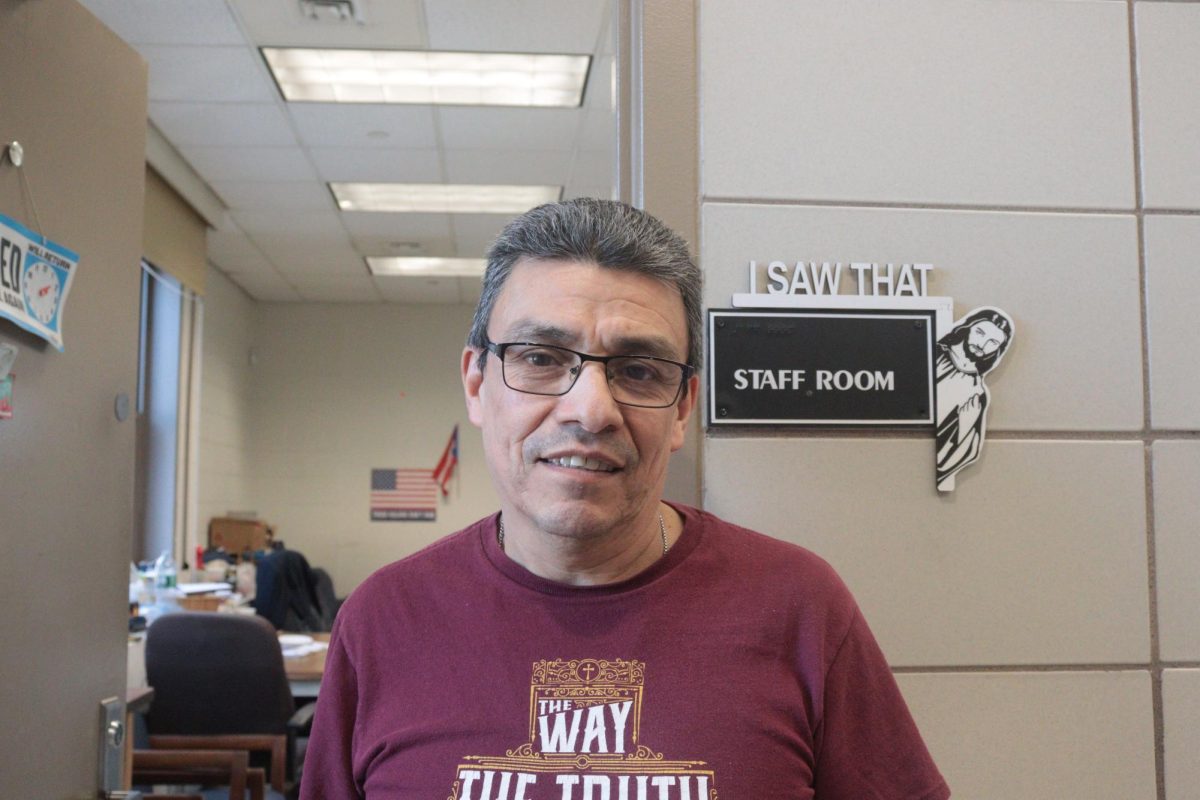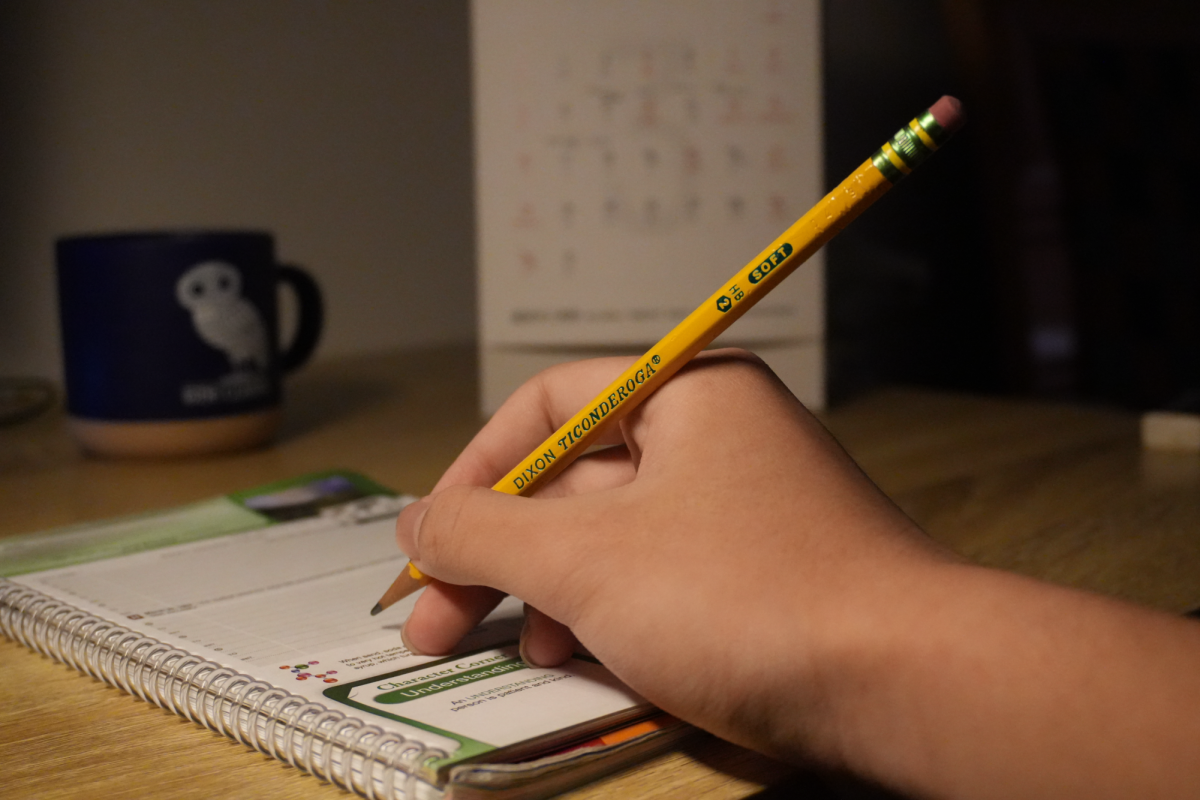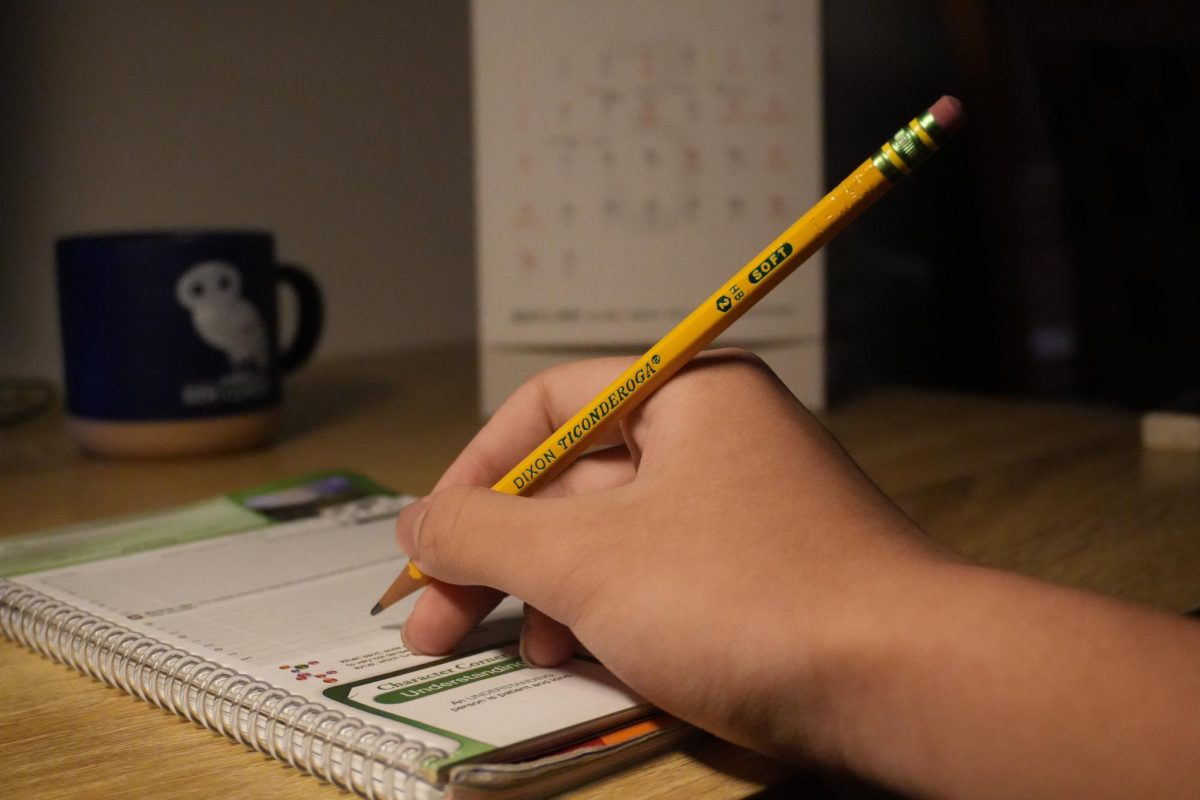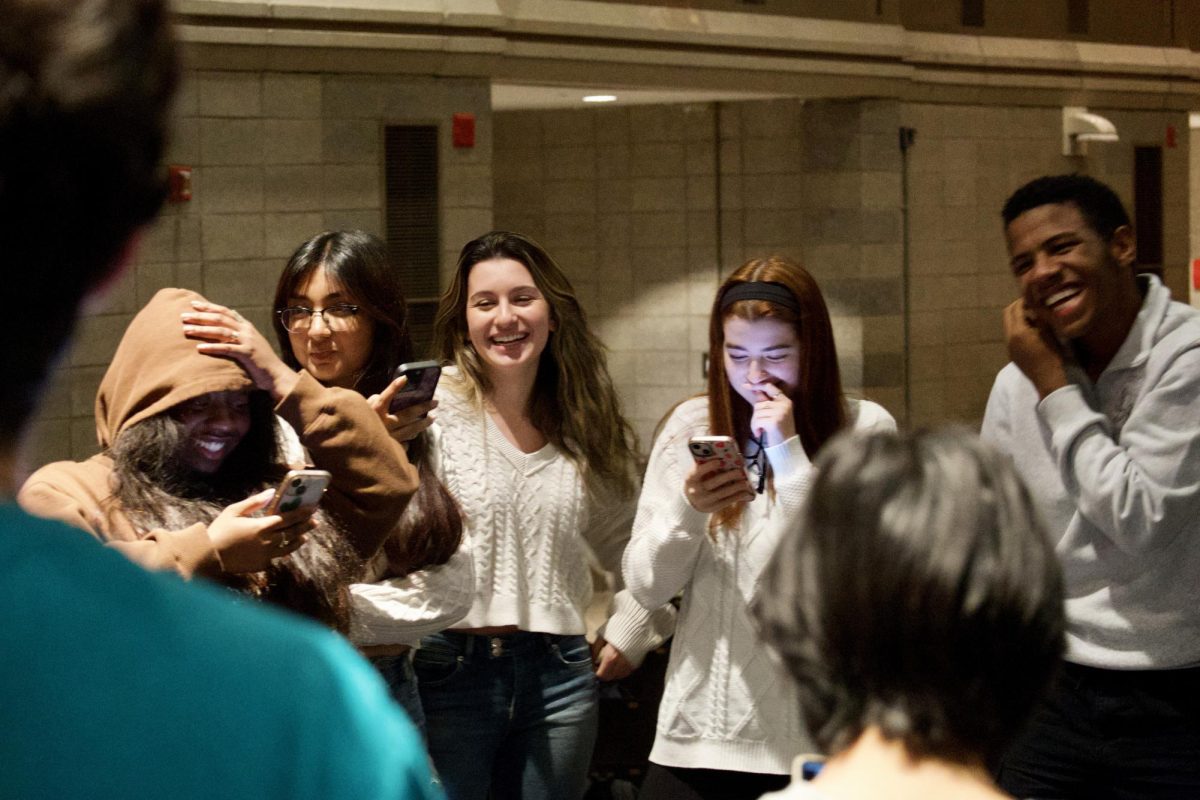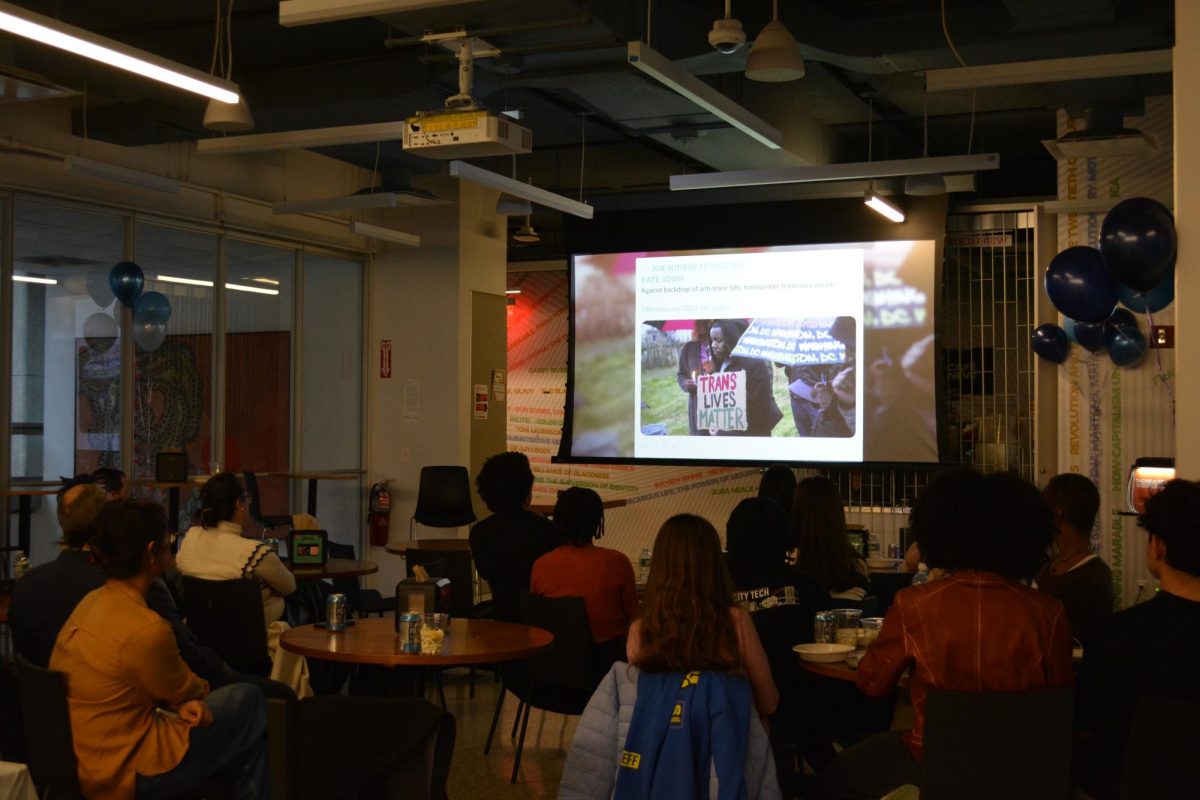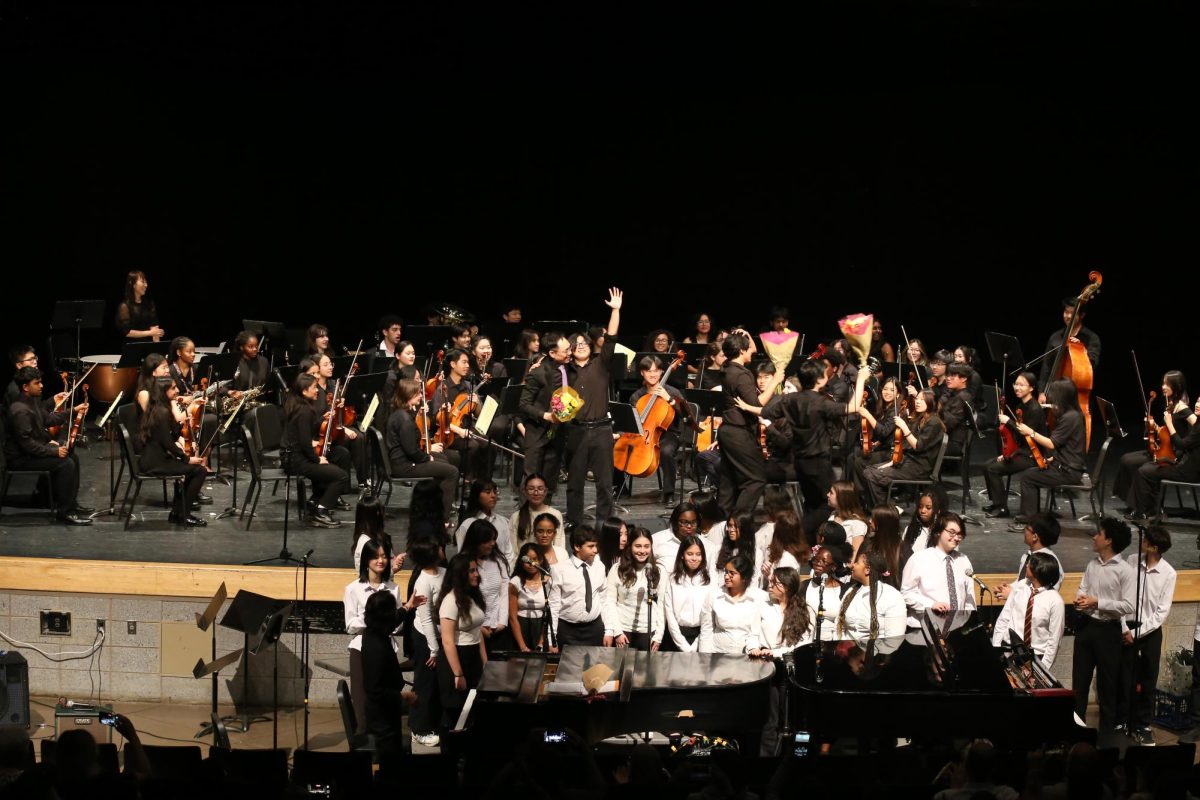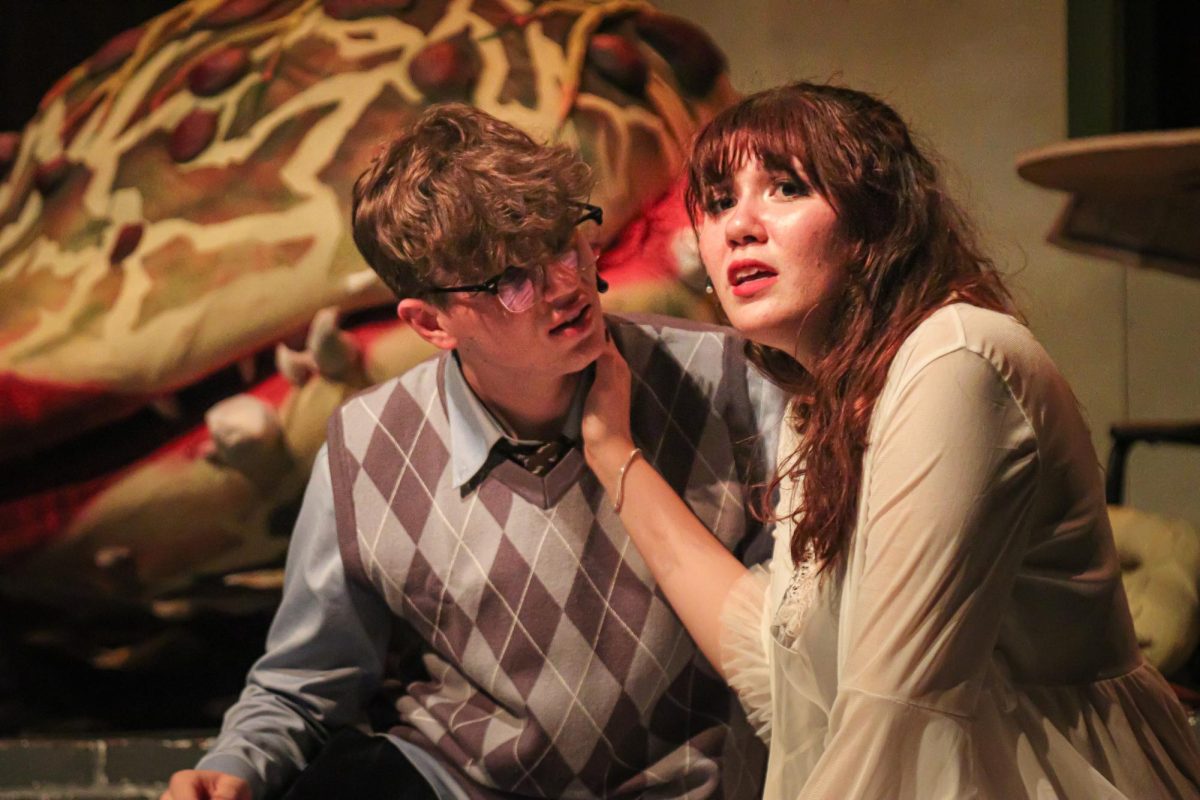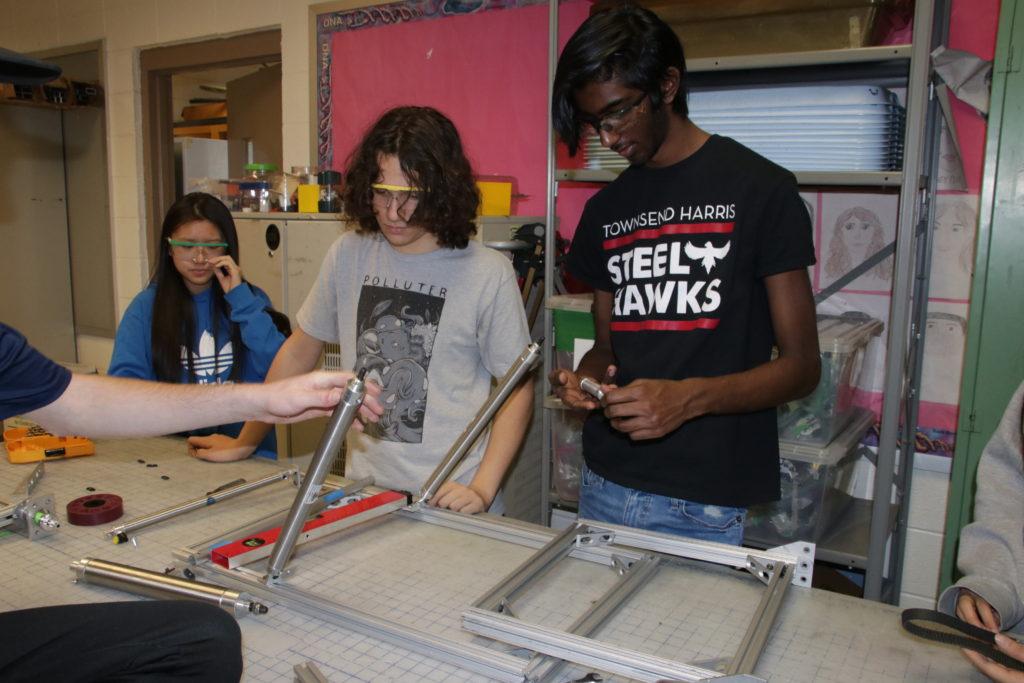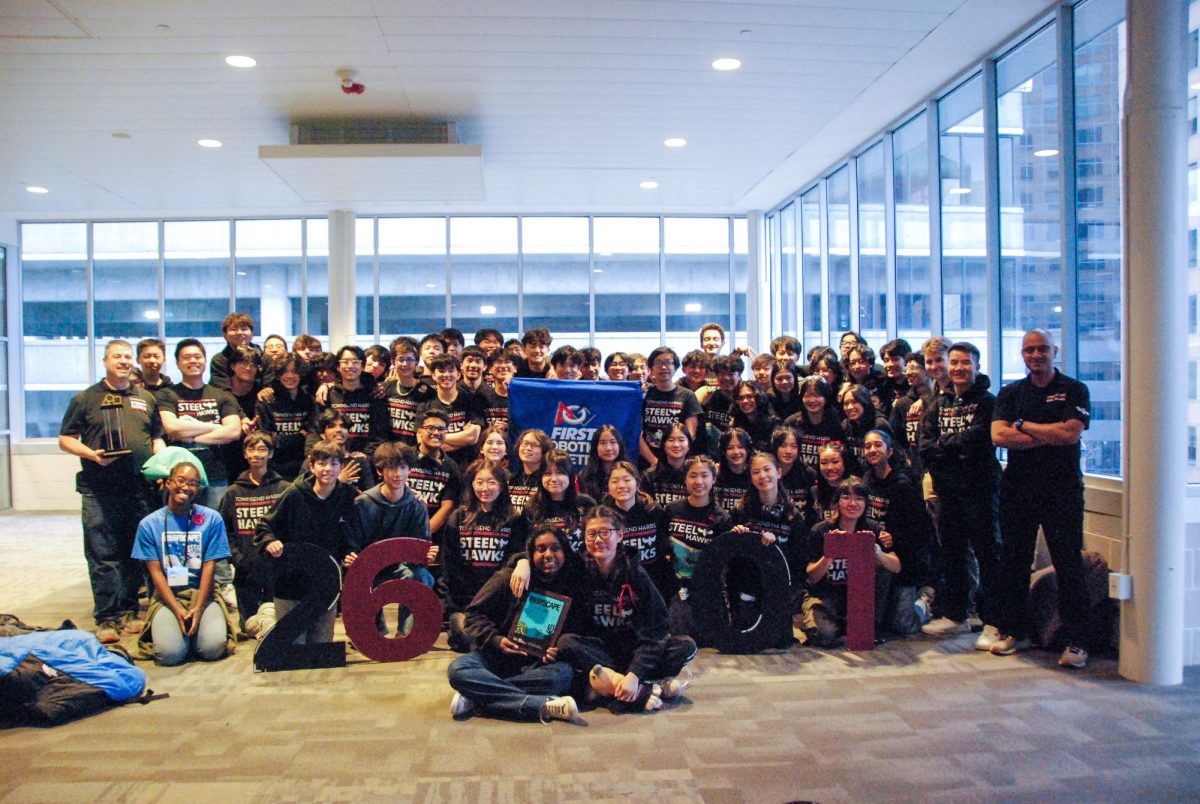
Upon entering the sixth floor in the late evening, goggled students move about in fervent concentration. Some hover over a robot, slowly building its skeleton. Others are innovating and planning out next steps with sketches scribbled out on a white board. Programmers meticulously problem-solve to create functioning codes to power the robot’s mind. They work in a network of movement and productivity, with the goal of doing one thing: to win.
On January 4th, the Steel Hawks (FRC 2601) started this year’s build season. In a live broadcast, robotics organization For Inspiration and Recognition of Science and Technology (FIRST) announced this year’s game to be Infinite Recharge. The Infinite Recharge season is in partnership with Lucasfilm to partake in its Star Wars: Force for Change initiative.
The teams must build a droid to protect FIRST city from an impending asteroid shower. The robots must collect and score power cells by taking hold of up to three balls and launching them through openings of different heights along a wall, or Power Ports. The higher the droid successfully launches a Power Cell through one of the three openings, the more chances a team has to score points. The lower port grants two points, the second four points, and the last six points. Here, the robot is autonomous for 15 seconds and relies solely on the code created by its team.
A driver then controls the robot for two minutes and fifteen seconds. They must collect the power cells from one of five chutes in the loading bay, drive across a trench run strewn with boundaries, a.k.a. FIRST city, and score the power cell into the low (1 pt), outer (2 pts), and inner ports (3 pts). The driver must score a sufficient amount of points to activate sections of the Shield Generator (balance hanger), after which they must spin a color wheel a certain amount of times (10 points) or position the wheel to a certain color (20 points). Nearing the end of the game, the robots have to race to their given Rendezvous Point. The robots must then fasten themselves to the Shield Generator (25 points), that holds up to 2 robots. In an alliance, if the Shield Generator is level, bonus points are awarded to the two droids. The alliance with the most points wins the match.
Coach and AP Physics teacher Joshua Raghunath looks forward to this year’s theme, stating, “It integrates a lot of past ideas from previous games so you have aspects where you can shoot a ball at various heights, you have a relatively open field… and you have something new.” Besides its similarity with previous games, this year’s Star Wars theme gives underclassmen, upperclassmen, and teachers motivation for the season to come. “This year’s theme allows for more interest for outside people to come [and] keeping with the modern times is fun and interesting,” said senior Shane Werther, who leads the mechanical subteam.
President Togay Atmaca and Vice President of Fabrication James Hopkins all stressed the recurring problem from previous years of prioritizing and ensuring the team of around eighty students stays on the same page. “One problem [the team] usually has in the idea phase is that we don’t ever move out of the idea phase. Last year particularly, it took us until week 4 of our 6 week build season to decide on final mechanisms, which gave us less time for driver practice and made up the entire build season,” explained James. “This year, we’ve developed stricter deadlines for prototyping, encouraging the team to work harder and get their ideas done, as well as giving us more time to work on things like integration and geometry.” Togay reported that setting deadlines allowed the team to “already decide a couple of the robot’s final parts.”
Thus far, the team has been hard at work and have made great progress. Most ideas that were circulating were regarding the robot’s shooter and climber mechanisms. Freshman Joyce Ke wanted to include a turret for the shooter mechanism but it proved to be too complex for the mechanical and programming team to build and code. “I was elated when the shooter worked and when we had a decent climber,” she said.
This season, Joyce hopes to acquire as many skills as she can to be an asset to the team. “I want to get to a good level of CADing, help contribute in mechanical and electrical if they need help,” she said. “I have a lot of ambitions but so far these are my goals for this season and I’ll work hard to achieve them.”
Head Coach and Chemistry teacher Joel Heitman noticed the younger roboticists have been driven from the start and “have grasped it with both hands and have really tried to move it forward at a very fast rate.” While winning a regional competition and qualifying for the world championships is the end goal, the Steel Hawks work to build not only a robot but a fun environment where students grow.
“[It’s important to] make sure that the freshmen feel they have something to offer to the team because a lot of time they come in with skill sets that are not as developed as someone who has been on the team for two or three years,” said Mr. Raghunath. “We want to make sure that it remains a safe place for everyone to come in, have fun and learn something along the way and if we ever start to deviate from that we try to make quick corrections to make sure it remains that way.”



